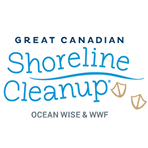ECOASSETS
Suggested Grades: 1, 3, 6/7+
Driving Questions
Grade 1
- What things in nature are important to your community?
- What do they do for our community?
- What can we do to keep them living?
Grade 3
- What things in nature are important for people?
- What do they do for us?
- What can we do to keep them living?
Grade 6/7
- What is an ecoasset?
- What ecoassets exist in our community?
- Why do we want to spend time and energy stewarding ecoassets?
Learning Intentions
- I can list some natural resources in my community and talk about what they do for me
- I understand that we depend on nature and that it is important to steward it
Higher grades
- I understand that it is either not possible or more expensive to replace an ecoasset with a machine than to protect and maintain it.
Materials
- Magazines or paper and markers for drawing or photos (kids could bring them in)
- White board or large chart paper
- Information at https://projectwatershed.ca/ecoassets/
Curricular Competencies
Science:
- Processing and analyzing data and information
- Communicating
Math:
- Communicating and representing
- Connecting and reflecting
Social Studies:
- Recognize causes and consequences of events, decisions, or developments
Lesson
- Have students make an offering of experience: what is something in or from nature they enjoy and why?
- Talk about what an ecoasset is – https://projectwatershed.ca/ecoassets.
- Draw or cut out or have students bring in pictures of things in nature.
- Make chart with class, brainstorm things people/communities get from nature. Food/Water/Learning/Playing etc… and make those columns on the chart. For older students explain that we can call these things ecosystem goods and services (a good is something tangible we consume e.g. food, a service is something we use or benefit from e.g. water filtration, recreation). Many items will fit under multiple columns. Point that out. Students put their drawings/cut outs in the chart as they see fit. The chart could be set up and added to over time.
- Go through some of the items in the chart and ask what could harm them.e.g. cutting them down/paving them over/ polluting them as well as what keeps them living e.g. using less resources, reusing, creating parks, properly disposing of garbage.
- For older students read/talk about the time and money needed to replace the good and service with something human made. Pollination is a good example – Life without Bees, Collapse of honeybees could cost hundreds of billions of dollars
Add on:
- Older students could be asked to pick an ecoasset and do a mini report on it, what negatively affects it, how to steward it, the pros and cons of having to replace it with something human made.
Lesson for Grade 7 and up:
Click here to download a printable version of this lesson
Community Connection
Go on a walk and pick up garbage. This could be done around your school or any other location. Project Watershed and other non profit groups organize groups for the Great Canadian Shoreline Cleanup at the end of September. You could join them or do your own.
projectwatershed@gmail.com


